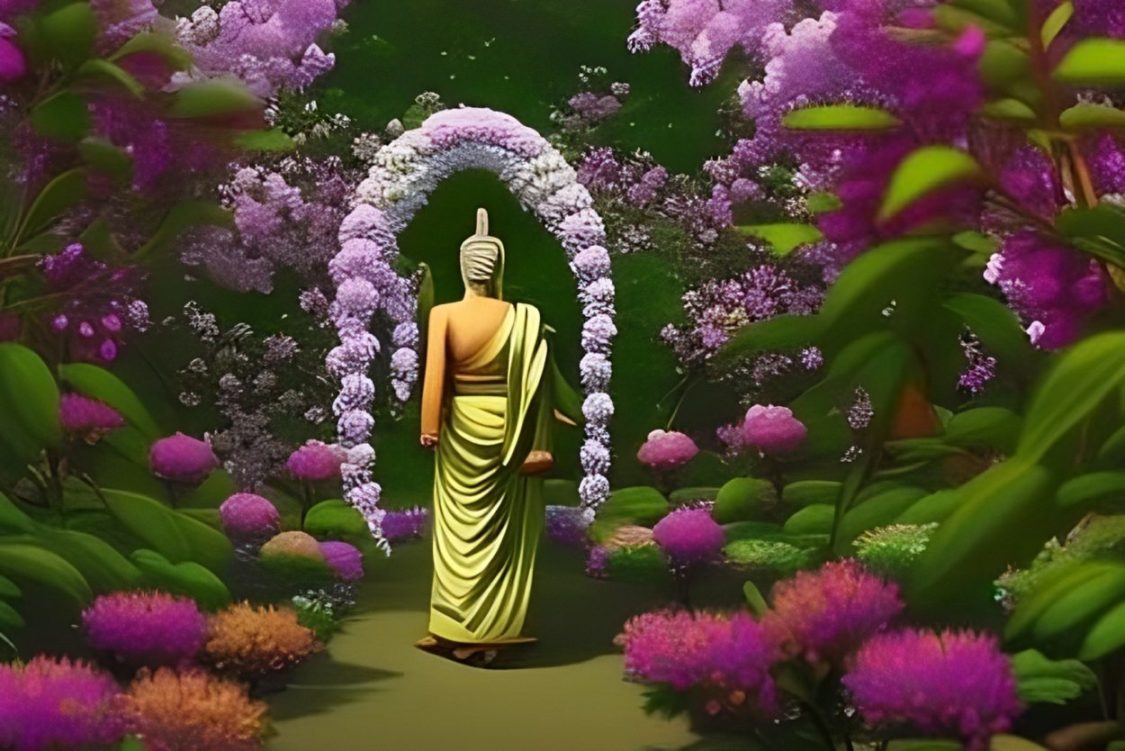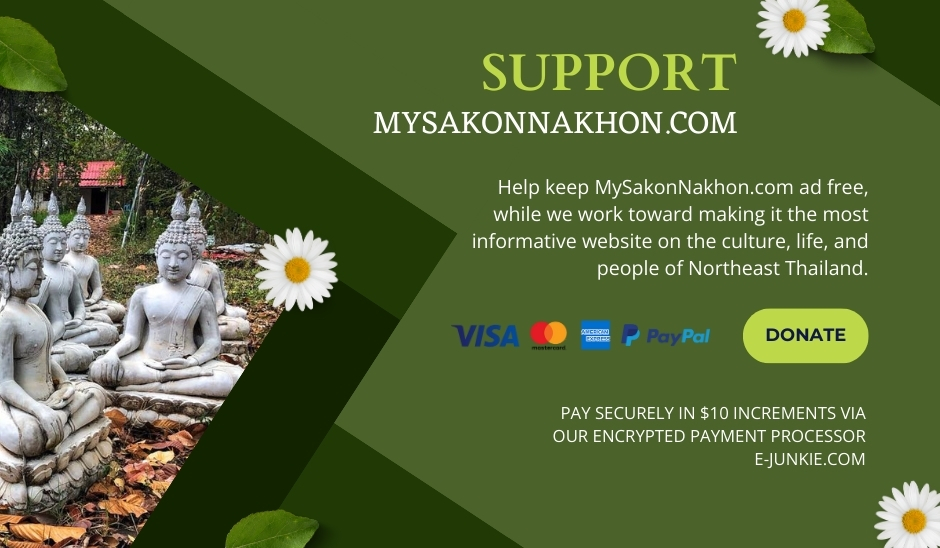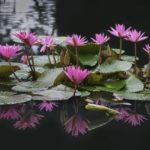
The Thailand Tradition of Giving Flowers to Monks at Temples

In Thailand there is a tradition of giving flowers to monks (ประเพณีตักบาตรดอกไม้) at temples. But what are the origins of this tradition?
According to Thai legend, the origin of the flower giving custom began in the era of King Bimbisara (544 -492) who reigned over Magadha, which today is located in Northeastern India. The king was very fond of jasmine flowers. Every day he sent a flower arranger named Sumon Malakarn (สุมนมาลาการ) to go out and bring him a bouquet of fresh jasmine flowers.
One day while he was picking jasmine, Nai Malakarn saw the Buddha walking with some other monks. He saw 6 colors miraculously radiating from the Buddha’s body. Each color today is believed to have symbolic significance. This symbolism is attached to the color of flower one gives to monks in Thailand:
1. Blue (Neela) Flowers: Blue represents the Buddha’s spirit of tranquility, calmness, and meditation. It symbolizes the depth of wisdom and the peaceful nature of enlightenment.
2. Gold (Pita) Flowers: Gold symbolizes the Buddha’s spiritual richness, enlightenment, and the illumination of knowledge. It represents the highest form of purity and wisdom.
3. Red (Lohita) Flowers: Red is associated with the Buddha’s compassion, love, and the warmth of his teachings. It signifies the heart, both in a physical and spiritual sense.
4. White (Odata) Flowers: White represents the purity and righteousness of the Buddha’s thoughts and actions. It symbolizes the path to enlightenment and the elimination of ignorance.
5. Green (Harita) Flowers: Green symbolizes the Buddha’s healing abilities and the growth of spirituality. It represents the compassionate nature of the Buddha in nurturing all beings.
6. Yellow (Manjesta) Flowers: In some traditions, a sixth color, yellow, is added to the aura. Yellow symbolizes the Middle Path, balance, and equanimity. It reflects the Buddha’s harmonious and balanced approach to life.
Seeing this kaleidoscope of colors radiate from the Buddha’s body, Nai Malakarn immediately had great faith in the power of the Buddha. He decided to offer his jasmine flowers to the Buddha. He did this on realizing that the King only provided him sustenance in this world, while making merit to the Buddha offered him sustenance in this life and the next.
He also said to himself that if he were to be executed for not bringing jasmine flowers back to the king, he would gladly accept his fate.
Nai Malakarn walked over to the Buddha and scattered 2 handfuls of jasmine flowers over the Buddha’s head. As he did so, a miracle occurred. The jasmine flowers floated around the Buddha’s head 3 times and then gathered together to form a floating ceiling — a canopy to protect the Buddha from the sun.
When he scattered another 2 handfuls, the jasmine flowers floated around 3 more times, gathering into a canopy that protected the back side of the Buddha from the sun.
Nai Malakarn scattered another 2 handfuls of jasmine. The jasmine flowers floated around 3 more times and then gathered into a canopy on the left side of the Buddha’s hand. He then scattered another 2 handfuls of jasmine flowers, and all 8 handfuls of jasmine merged to form a canopy completely around the Buddha except in the direction he was walking.
After that, Nai Malakarn bowed down and paid his respects to the Buddha. When he returned home, his wife feared that he would be punished for his failure to follow King Bimbisara’s orders. However, he was not fearful and went to tell the King why his jasmine flowers had not been delivered.
When he told King Bimbisarn his story, the King was not angry but very pleased. In fact, he gave Na Malakarn a special gift. And from that day on, Nai Malakarn’s life was a happy one.
This story from Buddhist legend has led to Thailand’s tradition of making merit by giving flowers to monks.
Thai Flowers Given to Make Merit in Northeast Thailand
In Northeast Thailand, there are some additional meanings attached to specific flowers given to monks at temples. For example, in the video above we seen Khun Yai of Sakon Nakhon tying flowers which she will take to the temple to make merit (ทำบุญ).
The first Thai flower she is tying is Marigold, which in Thai is called dàwk daao-reuang (ดอกดาวเรือง). Marigolds in Thailand symbolize monks and the beauty of the Dharma, and its fragrance is thought to be appealing to spirits and deities.
The white flower she is tying is the Butterfly Lily, which in Isan culture is said to represent a beloved woman or a woman who has a great capacity for love. This flower thus symbolizes an Isan woman’s devotion to Buddhism and a virtuous life. The Butterfly Lily is called dàwk máai sà-lay-dtay (ดอกไม้สะเลเต) in Thai. It has a very attractive fragrance.
The tradition of giving flowers at Thai temples is also symbolic of impermanence, as flowers are delicate and fleeting, much like life itself.
Lastly, Lotus flowers of course are deeply entwined with Thai Buddhism, symbolizing the profound connection that exists between spirituality, nature, and everyday life in Thailand. However, Lotus flowers are less frequently given to monks than other flowers, such as Marigolds and Butterfly Lilies.
- The Royal Ploughing Ceremony in Thailand – A History - May 8, 2024
- Dying Well the Buddhist Way in Thailand - May 7, 2024
- Comforting Words for the Brokenhearted in Thailand - May 6, 2024




